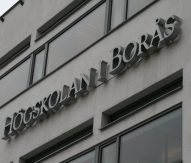
Project set to develop low-cost Si-Photonic transceivers
French research and technology organisation Leti has announced the launch of a project aimed at enabling the mass commercialisation of Si-photonics-based transceivers.
The Leti co-ordinated COSMICC project will combine complementary metal-oxide semiconductor (CMOS) electronics and Si-photonics with innovative, high-throughput, fibre-attachment techniques.
The COSMICC-developed technology aims to address future data-transmission needs with a target cost per bit that traditional wavelength-division multiplexing (WDM) transceivers cannot meet.
The project’s 11 partners from five countries are focusing on developing mid-board optical transceivers with data rates up to 2.4 terabyte per second with 200 gigabit per second per fibre using 12 fibres.
Project leader Ségolène Olivier of Leti said: “By enhancing an R&D photonic integration platform from project member STMicroelectronics, the partners in COSMICC aim to demonstrate the transceivers by 2019.
“We also plan to establish a new value chain that will facilitate rapid adoption of the technologies developed by our members.”
Several technological developments will be used to boost the photonic integration platform’s high data-rate performance, while also reducing power consumption.
A first improvement will be the introduction of a silicon nitride (SiN) layer that will allow development of temperature-insensitive multiplexer/demultiplexer (MUX/DEMUX) devices for coarse WDM operation. In addition, the SiN layer will serve as an intermediate wave-guiding layer for optical input/output to and from the photonic chip.
Additional steps will enhance modulator performance, while also making the transceivers more compact and reducing energy consumption.
Project demonstrators will be tested in both lab and field environments.
The project is funded under the Horizon 2020 programme and in addition to Leti, project participants include STMicroelectronics, France; STMicroelectronics, Italy; University Pavia, Italy; Finisar, Germany; Vario-Optics, Switzerland and Seagate, UK.




